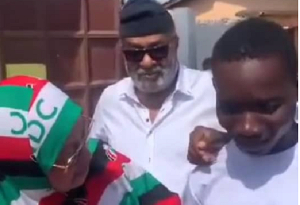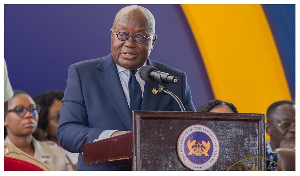The infrastructural development agenda of our beloved Ghana predates from Ghana’s first President, Dr Kwame Nkrumah to the fourth republican regimes of H.E Flt. Jerry John Rawlings, H.E John Agyekum Kuffour, H.E late Prof. John Evans Atta Mills, H.E John Dramani Mahama to the current president, H.E Nana Addo Dankwa Akuffo-Addo. All these leaders have contributed immensely to reducing Ghana’s infrastructural deficit.
The nation has seen the construction of notable infrastructural projects like Tema Oil Refinery, Kwame Nkrumah Circle Interchange, University of Ghana Medical Centre, The Tema Motorway Interchange, University of Health and Allied Sciences, the University of Energy and Natural Resources, etc., many of which, are currently serving the good people of Ghana.
The current ruling NPP government recently launched a delivery tracker to tout its social and economic infrastructural achievements since assuming power in 2017, with over 17,000 projects across the country.
Ghana’s current largest opposition party, the NDC, has however disputed and debunked claims of the much-touted infrastructural achievement of the NPP, arguing most of the highlighted projects were initiated under the erstwhile Mills-Mahama administration, and considerable number non-existent or pinched from other development entities in the country.
Clearly, the subject of which regime marked the biggest stride in reducing Ghana’s socio-economic infrastructural deficit, propelling recent dogmatic debates between the two major political parties in Ghana (the NPP & NDC), is a novelty of none, but a creation of the people’s mandate as enshrined in the 1992 Constitution.
What this means is that our political parties & their leaders thereof must not glory themselves over socio-economic developmental projects they undertake, but consider it fulfilling the mandate and interest of the good people of Ghana.
10 billion dollars infrastructural plan (The BIG Push)
The 10 billion dollars infrastructural plan as christened by the NDC’s presidential candidate, H. E John Dramani Mahama to drive more socio-economic development in the form of roads, hospitals, schools, e.tc. ought to be interrogated to ascertain the modalities of its implementation and achievement, as well as specific projects involved and the funding source.
While we wait for the NDC’s detailed implementation plan for the “The Big Push”, I will attempt to propose for some clearer and structured modalities in implementing such a laudable socio-economic infrastructure development initiative.
On the issue of specific projects to be undertaken, I think as a country, we need to conduct a project need-based assessment across all the Districts of Ghana through our District Assemblies to ascertain which infrastructure projects Ghanaians really need not what central government think they need.
The assessment will help the government to know the true state of the nation’s infrastructure deficit. The identified projects should be profiled stating the purpose, costing, completion timelines, funding arrangements.
Such information should be made public through a website for the Ghanaians to know which kind of projects they should be expecting in their communities.
Dealing with the matter of fund disbursement, the 10 billion dollars should be disbursed through the District Assemblies, and projects spearheaded by same with oversight supervision from the central Government, to drive the various identified projects.
The Local Government machinery can effectively lead such infrastructure initiatives because they understand the development needs of the local communities. When such a structure is put in place, Ghana can achieve equitable development across the country within a defined period.
NPP Infrastructure delivery tracker and election 2020 promise
The ruling NPP government’s provision of roads, highways, railways, water and sanitation infrastructure through the Railway Development Ministry, the Infrastructure for Poverty Eradication Programme (IPEP) and the Development Authorities, as well as the Ministry of Inner City and Zongo Development, and the Zongo Development Fund, has led to significant progress in the provision of basic infrastructure at many local areas and special disadvantaged communities like the Zongos and Inner Cities.
According to the NPP, it will strengthen the capacity of Development Authorities and the Zongo Development Fund, to enable them to attract private investors to provide socio-economic infrastructural projects such as drains, culverts, feeder roads, classroom blocks, school furniture, CHPS compounds, markets, toilet facilities among others in their next NPP Government.
As much as we credit the Government for a good job done, it is important to mention, beyond 2020, the Government must commit to completing all abandoned projects started by the previous government dotted around the country before initiating new ones, upon winning the December 7, 2020, general polls.
Way forward on the infrastructural debate
Let’s consolidate all infrastructure-led agencies i.e. Ghana Highway Authority (GHA), Department of Feeder Roads (DFR), Zongo Development Agency, Coastal Development Authority system, etc. set up by previous and this current Government to deliver infrastructure into one big Authority, to be called the Ghana Infrastructure Authority (GIA) which will be clothed with the necessary legislation and funding to deliver infrastructural developments across the country.
Ghana Infrastructure Authority should be the key driver and lead agency working with the District Assemblies to drive the developmental agenda of the country. The GIA will have mandated officers in all 216 Districts to ensure the implementation of infrastructural projects.
The 10 billion dollars big push and the new development projects promised by the NDC and NPP governments respectively, should be implemented through the Ghana Infrastructure Authority in direct collaboration with Metropolitan, Municipal and District Assemblies (MMDAs), Non-governmental Organizations (NGOs), Civil Society Organizations (CSOs), Faith-based Organizations (FBOs), amongst several other developmental entities in Ghana and abroad.
Opinions of Saturday, 5 September 2020
Columnist: Emmanuel Owusu



















